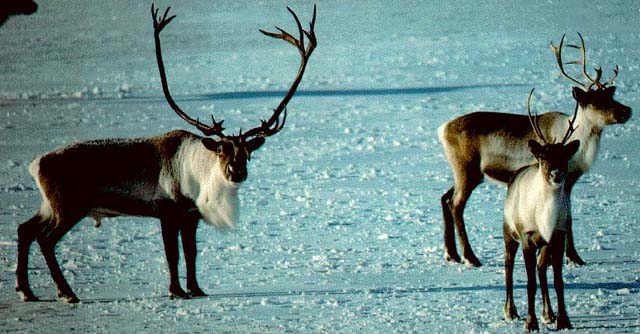You aren't always what you eat – and that's a good thing. It's also why pesticides in reasonable usage haven't harmed arctic mammals such as caribou. Not only can caribou metabolize some current-use pesticides ingested in vegetation, they also limit the exposure of humans, including those who eat caribou.
Pesticides or heavy metals enter rivers or lakes and vegetation, where they are ingested by fish and mammals and, in turn, are consumed by other animals and humans. The substances can become biomagnified, or concentrated in tissues and internal organs, as they move up the food chain. Biomagnification has been implicated as the cause of higher concentrations of many long-used pesticides and other toxic chemicals such as PCBs found in wildlife and in Inuit and other aboriginal and non-aboriginal Northerners dependent on hunting.
Such "legacy contaminants" are now widely banned under the Stockholm Convention, he said. But some have been replaced by current-use pesticides (CUPs), and few studies have looked at whether they also biomagnify so the team focused on those for the new analysis.

Photo: Gov't. of the Northwest Territories, Division of Natural Resources.
"This is good news for the wildlife and people of the Arctic who survive by hunting caribou and other animals," said Adam Morris, a PhD student in the School of Environmental Sciences and lead author of the study published recently in Environmental Toxicology and Chemistry. "The lack of any significant biomagnification through the food chain indicates that there is very little risk of harm from exposure to these CUPs in this region."
Morris focused on studying the Bathurst region of the Canadian Arctic, working with Guelph toxicology professor emeritus Keith Solomon, adjunct professor Derek Muir, and collaborators from Environment Canada's Aquatic Contaminants Research Division.
They examined the vegetation-caribou-wolf food chain in the area, where the presence of other organic contaminants such as legacy pesticides and fluorinated surfactants suggested that CUPs might be found in the vegetation and animals. Caribou are among the most important subsistence animals for people living in the North, and the Bathurst caribou herd is particularly critical to the area's socioeconomic security.
Wolves, like people, are a top "consumer" of caribou.
"It is an important responsibility, both for health and for food security issues that Northerner's face, that we monitor traditional food sources," Morris said.
By testing vegetation, the researchers found large enough concentrations of CUPs to confirm that they were entering the food chain.
In caribou eating that vegetation, CUPs were also present, but they did not increase (biomagnify) significantly in caribou compared to their diet. The concentrations were even lower in wolves, suggesting sufficient metabolism of CUPs in both animals to prevent significant biomagnification.
"The lack of biomagnification also means that we are unlikely to see sudden unexpected increases in concentrations of the CUPs in terrestrial top predators," Morris said. "But this needs to be confirmed in other food chains in the Arctic before general trends can be established that are applicable to larger data sets."
Morris said these CUPs represent only a small percentage of contaminants in Arctic regions or in the environment globally.
"However, their unique set of properties does help us more clearly see how different contaminants behave in the environment and in food chains compared to legacy contaminants."
Morris has widened his research to include marine food chains and is also studying the effects of a range of organic flame retardants on the same terrestrial food chain.
The animal samples used in the research were all provided by subsistence hunters and trappers. "There would be no study possible, at all, without their co-operation," Morris said. "I cannot stress enough how important local skills and knowledge were to this project. Generations of experience and knowledge often go into the hunts, and we simply cannot find that anywhere else in the world."





Comments